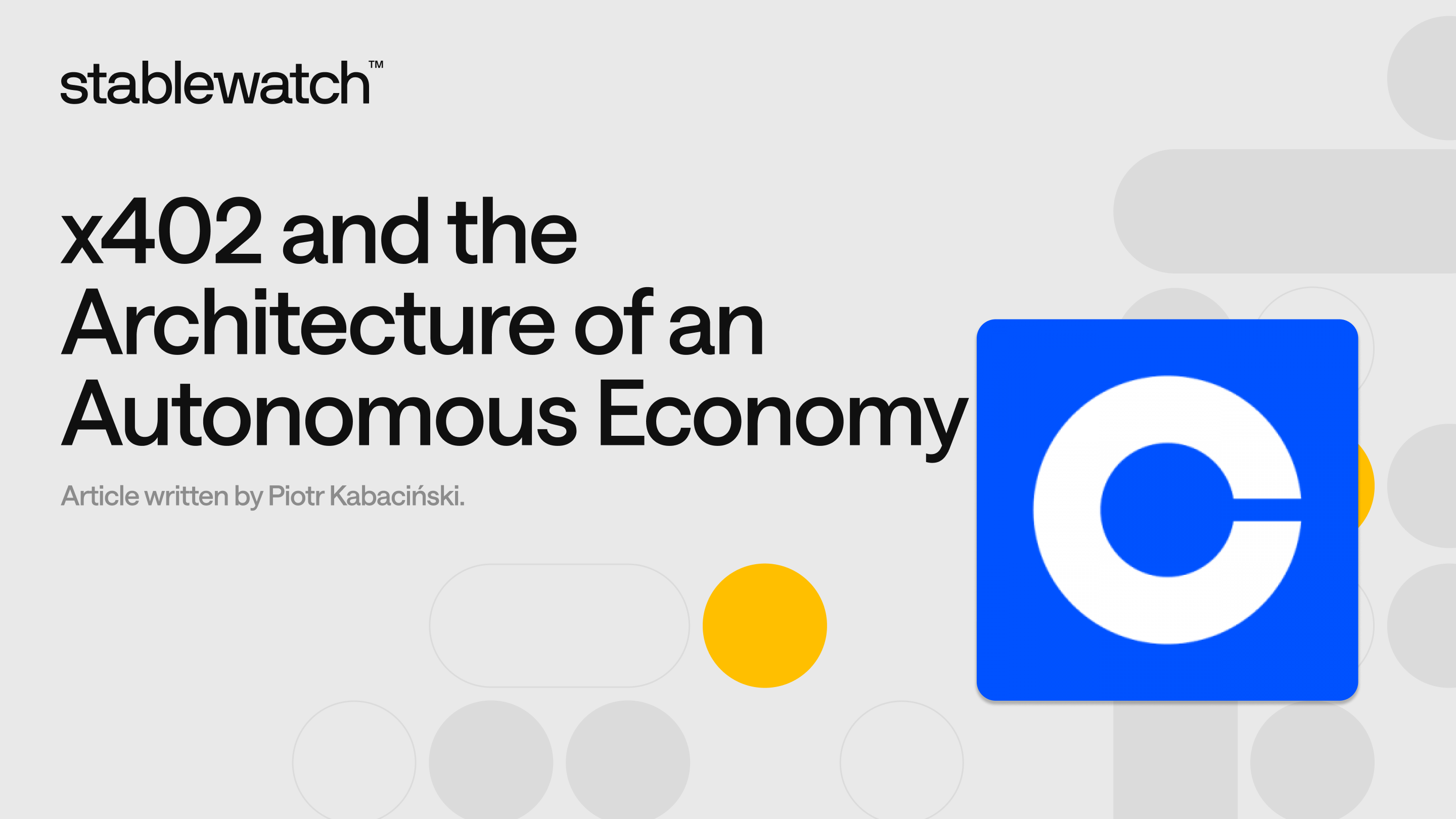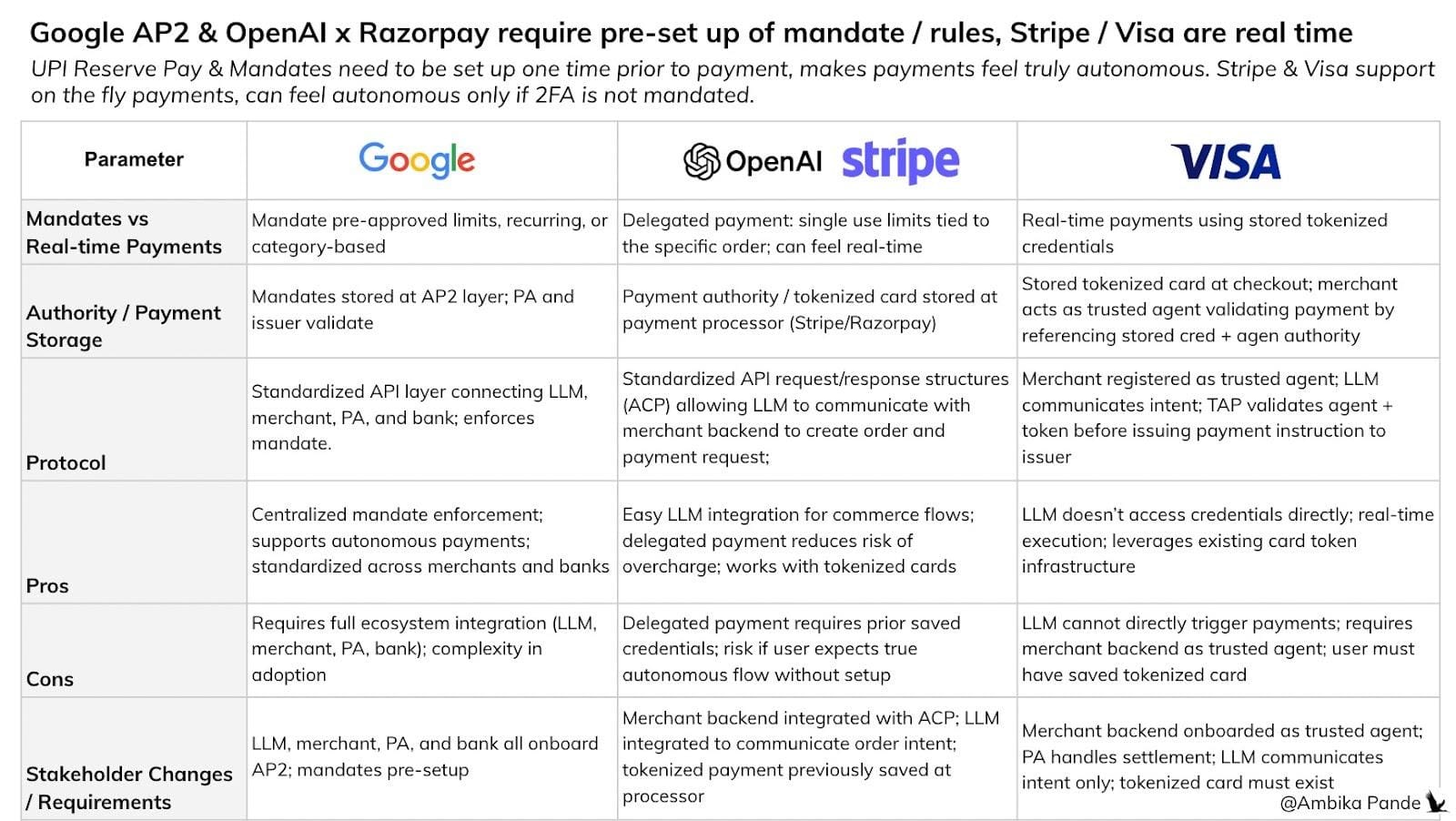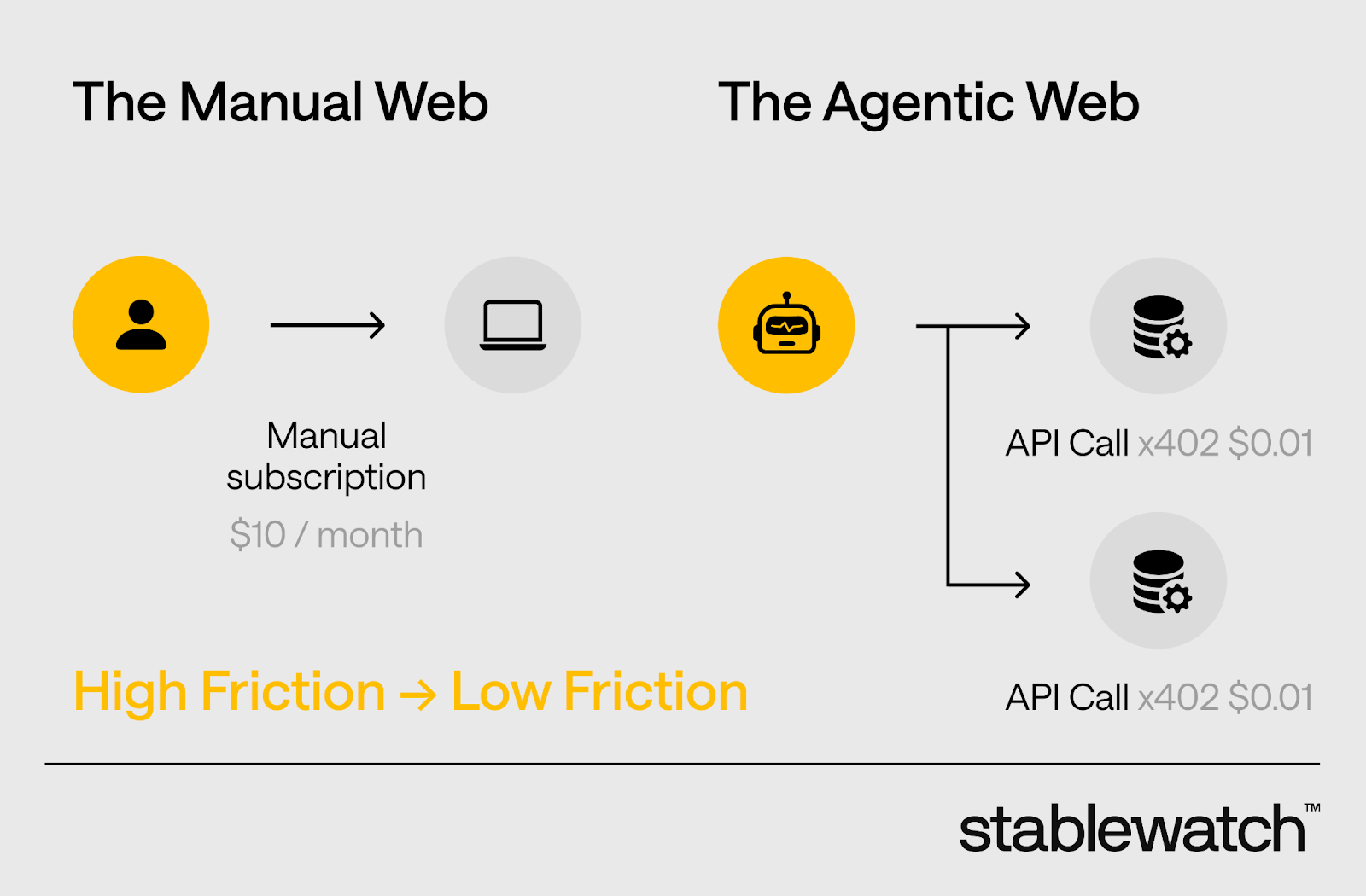
x402 and the Architecture of an Autonomous Economy
AI's Value Bypass
The proliferation of generative AI has introduced a systemic inefficiency into the digital economy. It arises not from a flaw, but from a fundamental architectural incompatibility between how autonomous agents consume information and how the web has historically monetized its creation.
The result is the "value bypass" problem. The internet's entire economic model, predicated on capturing human attention (ads) or loyalty (subscriptions), is being systematically bypassed by non-human agents. Such a bypass creates an economic short-circuit, where value is consumed but its creation is not compensated. The high-profile lawsuits, such as The New York Times vs. OpenAI, are not the problem themselves but the most visible symptom of this deep, protocol-level deficit.
The short-circuit is not limited to journalism or art. Consider the developer who maintains a specialized, free-to-use weather data API. While built for human-scale queries, an AI agent swarm can query this API millions of times per hour, scraping its entire dataset. Doing so incurs massive server costs for the developer, who receives no revenue in return. The value bypass is achieved.

This problem creates both an existential threat and a critical bottleneck. As AI becomes the primary interface to information, it risks bankrupting its own sources, leading to a content drought of AI-generated echoes. It’s also a commerce bottleneck, holding back the next economic wave: a burgeoning machine economy that currently lacks the foundational pipes of a native, scalable, and automated payment protocol to function.
The 30-Year Wait: Why HTTP 402 Status Code Failed
In response to this economic short-circuit, the solution emerging is not a new invention, but the activation of a 30-year-old idea: HTTP Status Code 402 "Payment Required." This standard, defined in 1996, was a prescient acknowledgment that the web would eventually need a native, protocol-level mechanism for value exchange.
For three decades, it lay dormant. It failed to gain traction for three fundamental reasons. First, it was underspecified: it defined the "what" (a server requires payment) but never standardized the "how" (the mechanism of that payment). Second, it faced a critical coordination gap — a chicken-and-egg problem where clients had no incentive to build payment logic for servers that didn't support it, and servers had no incentive to require payments from clients who couldn't pay.
Finally, the infrastructure didn't exist: legacy payment rails are built on a high-friction, high-cost architecture (with fees often exceeding $0.30 per transaction) that makes automated micropayments an economic impossibility. This same financial drag is precisely why all previous attempts at human-facing micropayment systems failed.
The x402 protocol, introduced by Coinbase, specifies the "how." But a protocol is merely a standard; its viability is enabled by a modern confluence of two other fundamental technologies that have matured at the precise moment they are needed most.

The first enabler is the rise of stablecoins — solving the volatility problem that makes assets like Bitcoin unsuitable for reliable commerce, providing a dependable unit of account. The second is the maturation of L2 blockchains (like Base). These high-throughput networks solve the technological cost problem, driving transaction fees down to the fractions of a cent — a must for true micropayments.
The twist is that x402's primary user is not a human, but an AI agent. For an autonomous agent, the cognitive cost of a micropayment is zero. It feels no annoyance, no hesitation, no fatigue. The technological cost barrier (via L2s) and the cognitive cost barrier (via AI) have collapsed simultaneously, finally unlocking the 30-year-old vision of a web with native value transfer.
The Machine-to-Machine Handshake
At its core, the x402 protocol is a "machine-to-machine handshake," a series of exchanges between four primary actors:
- The Client: The AI agent or application seeking a resource.
- The Resource Server: The API or website hosting the desired resource.
- The Facilitator Server: A trusted, off-chain service that bridges the gap between Web 2 and Web 3, handling payment flows.
- The Blockchain: The L2 network that serves as the final settlement layer.

source: https://www.x402.org/x402-whitepaper.pdf
The 7-step flow begins with a standard request.
Step 1: The Client (AI agent) makes a normal HTTPS GET request for a resource.
Step 2: The Resource Server, identifying the resource as protected, replies with the 402 Payment Required status code. It also includes a JSON PaymentRequirements object.
The object is a simple "invoice," detailing the amount (e.g., "0.01"), asset (e.g., "USDC"), network (e.g., "Base"), and destination (the server's wallet address). It provides the "how" that the original 402 standard lacked.
Upon receiving the 402 response, the Client's wallet takes over.
Step 3: The wallet (which could be a secure enclave or a smart contract) constructs a payment payload and cryptographically signs it.
Step 4: The Client re-sends its original request, this time appending an X-PAYMENT header containing the signed, off-chain payload.
Now, the protocol's critical design choice comes into play.
Step 5: The Resource Server does not interact with the blockchain. Instead, it receives the X-PAYMENT payload and forwards it to the Facilitator server settle endpoint. It is a deliberate architectural decision that allows any Web 2 developer to adopt x402 without ever having to manage complex blockchain logic, node infrastructure, or private keys.
Step 6: The Facilitator (a simple Web2 REST API) acts as the trusted intermediary. It verifies the payload's signature, checks for replay attacks, and settles the transaction onchain.
Step 7: Once the transaction is confirmed (which on an L2 takes just seconds), the Facilitator responds to the Resource Server. The Server, in turn, replies to the Client with a standard success response (HTTP 200 OK), finally granting access and providing the requested content. It also includes an X-PAYMENT-RESPONSE header containing the on-chain transaction hash as a receipt.
Such pragmatic architecture provides clear benefits. It is non-custodial, as the Facilitator never holds or escrows funds; it only settles them directly from client to server. It is onchain auditable, providing a transparent record of every transaction. Onchain settlement provides critical business benefits, inherently eliminating the risk of chargebacks and significantly reducing the potential for traditional payment fraud.
A Protocol, Not a Platform: x402's Role in the Stack
The x402 protocol is a composable primitive within a much broader "Agentic Commerce Stack" that is being built in parallel by a loose alliance of tech and finance giants. This stack is a collection of modular protocols, each solving a discrete piece of the agentic commerce puzzle. x402's power is not that it replaces these other efforts, but that it complements them, providing a critical piece of missing infrastructure.
To understand this stack, we should look at what the other giants are building.

source: https://www.thepaintedstork.com/p/75-the-ai-money-movement-layer-part
Google, for instance, has proposed AP2 (Agent Payments Protocol). AP2 is not focused on settlement, but on authorization. It provides a framework for humans to define granular permissions that govern what an agent is allowed to spend money on and under what conditions.
Stripe and OpenAI are collaborating on their own ACP (Agentic Commerce Protocol), which tackles the legacy bridge problem. Their solution focuses on helping AI agents navigate and interact with the millions of existing human-centric e-commerce checkouts, translating natural language commands into the complex API calls required to purchase a physical good.
Simultaneously, Visa has introduced its TAP (Trusted Agent Protocol). Visa's focus is on identity. TAP leverages Verifiable Credentials (VCs) to create a trusted digital identity for an agent, effectively distinguishing a legitimate, credentialed agent (acting on behalf of a known human) from a malicious bot. It solves the Know Your Agent (KYA) problem for servers.
Within this comprehensive stack, x402's unique and vital role becomes clear. It is not an authorization, identity, or legacy-bridging protocol. It is the primary crypto-native payment rail — the simple, stateless, and automated mechanism for how an agent settles an onchain, machine-to-machine payment once another protocol (like Google's AP2) has authorized it.
No protocol is a perfect solution, and x402 is no exception. While its design is elegant, its current, real-world implementation is not a finished, decentralized public good. We must acknowledge three significant and valid hurdles that stand between the protocol's current state and its ambitious vision.
As of today, the primary, production-ready instance of x402 runs on a highly specific stack: it uses USDC as the asset, Base (an L2 incubated by Coinbase) as the network, and the Coinbase Facilitator as the settlement bridge. The result is a singleton instance that is, by any fair definition, centralized. It presents a valid concern that the protocol is less an open standard and more a walled garden designed to onboard users into a specific corporate ecosystem.
While accurate, this criticism must be weighed against the protocol's strategic goal: bootstrapping. The greatest barrier to adopting any new web standard is developer headwinds. By offering a clean, fully-managed, single-stack implementation, the creators of x402 have drastically lowered the barrier to entry for the millions of Web 2 developers who wish to monetize their APIs. It allows them to adopt the standard today without needing to become experts in multi-chain wallet management.
The protocol itself is open, chain-agnostic, and asset-agnostic. Its long-term health and success are fundamentally dependent on it evolving beyond this initial bootstrap phase into a truly decentralized, multi-chain, and multi-facilitator ecosystem. The current singleton is a practical first step, not the intended final destination.
Skepticism is warranted; the internet’s history is littered with failed micropayment systems/ The core question is: "Why will this work when all others have failed?" Previous systems failed because they targeted humans, and in doing so, they ran head-first into the wall of human psychological friction. Humans, quite simply, despise mental transaction costs and the feeling of being "nickel-and-dimed."
x402 is not, and has never been, primarily for humans. Its target user is an autonomous agent, for whom the cognitive friction is zero. For human users, x402 is not a replacement for subscriptions — a model publishers rightfully fear cannibalizing — but rather a new, additive option for unbundling content and services that were previously economically unviable.
An Agent-to-Agent Economy
To view x402 as just a fix for the web's value bypass problem is to miss its true significance. Fixing the broken economics of today's web is the protocol's first order of business, but its ultimate purpose is far more reaching. It is the architectural blueprint for an entirely new, autonomous economy.
Consider the "before" state: a developer provisions API keys manually, negotiates monthly subscription plans, and relies on credit card billing cycles. Now, consider the "after": an AI agent, given a complex task by a user, programmatically discovers, authenticates with, consumes, and settles payments with a hundred different specialized APIs in a single second. This is not just an efficiency gain; it is a phase change. It enables a Cambrian explosion of micro-services that are discoverable and composable on the fly, a market that was simply impossible when every transaction was burdened with the weight of legacy finance.
For its entire existence, generative AI has been a parasite on the open web, consuming value without returning it. x402 provides the mechanism to invert this relationship, transforming AI from the web's largest freeloader into its single largest and most important customer. Suddenly, creators, developers, and data providers are directly and automatically incentivized to produce high-quality, high-value, machine-readable information. The protocol provides the pipes that allow AI's demand to fund a new renaissance of human-generated data and services, aligning the incentives of both creators and machines for the first time.

This vision leads to the final architectural leap: a true Agent-to-Agent (A2A) Economy. Once a machine can pay another machine, we move beyond simple human-to-machine commerce. In this new topology, a "Generalist" AI agent (like a user's primary assistant) can commission and pay a fleet of "Specialist" AI agents for their compute, insights, or specialized labor. A request to "find the optimal arbitrage opportunity between these three decentralized exchanges" could trigger the Generalist agent to hire and pay three different Specialist agents, each an expert in a specific protocol, and then synthesize their results. Google's "A2A x402 Extension" proposal already provides a framework for this exact scenario. It is the final primitive needed for a truly autonomous, scalable, and generative economy.
x402 is not a guaranteed future; it is a proposal and, more importantly, a choice. It provides the fundamental rails for a new machine economy, but the ecosystem must now consciously choose to build on them — a movement already gaining momentum with dozens of projects exploring the standard. Achieving this requires a deliberate and transparent evolution of the protocol from its current, pragmatically centralized state into a true, decentralized public good.
The evolution requires three main milestones. First is True Multi-Chain Support, which involves expanding the protocol beyond its initial home on Base to other L2s, Solana, and any other high-speed network where agentic activity flourishes.
Second is the creation of a Decentralized Multi-Facilitator Ecosystem. It is the most critical step, as it breaks the dependency on a single corporate entity, allowing any party to run a settlement node and ensuring the network is robust, open, and censorship-resistant.
Third, the protocol must adopt Advanced Payment Schemes. Examples include implementing “up to” logic for real-time, consumption-based pricing (e.g., "pay up to 5 cents for this stream") and “deferred” functions to allow agents to batch thousands of micro-transactions into a single, efficient, end-of-day settlement.
We are at a crossroads. One path leads to a centralized, siloed web, where a few giant AI companies act as the permanent gatekeepers of information, commerce, and value. The other, enabled by open, composable standards like x402, points toward a decentralized, dynamic, and truly fair internet.
This is a system where value can finally flow as freely as information, rewarding creators and developers directly for the utility they provide, regardless of scale. The architecture has been proposed, and the tools are being built. The choice of which internet we build next is now up to us.
